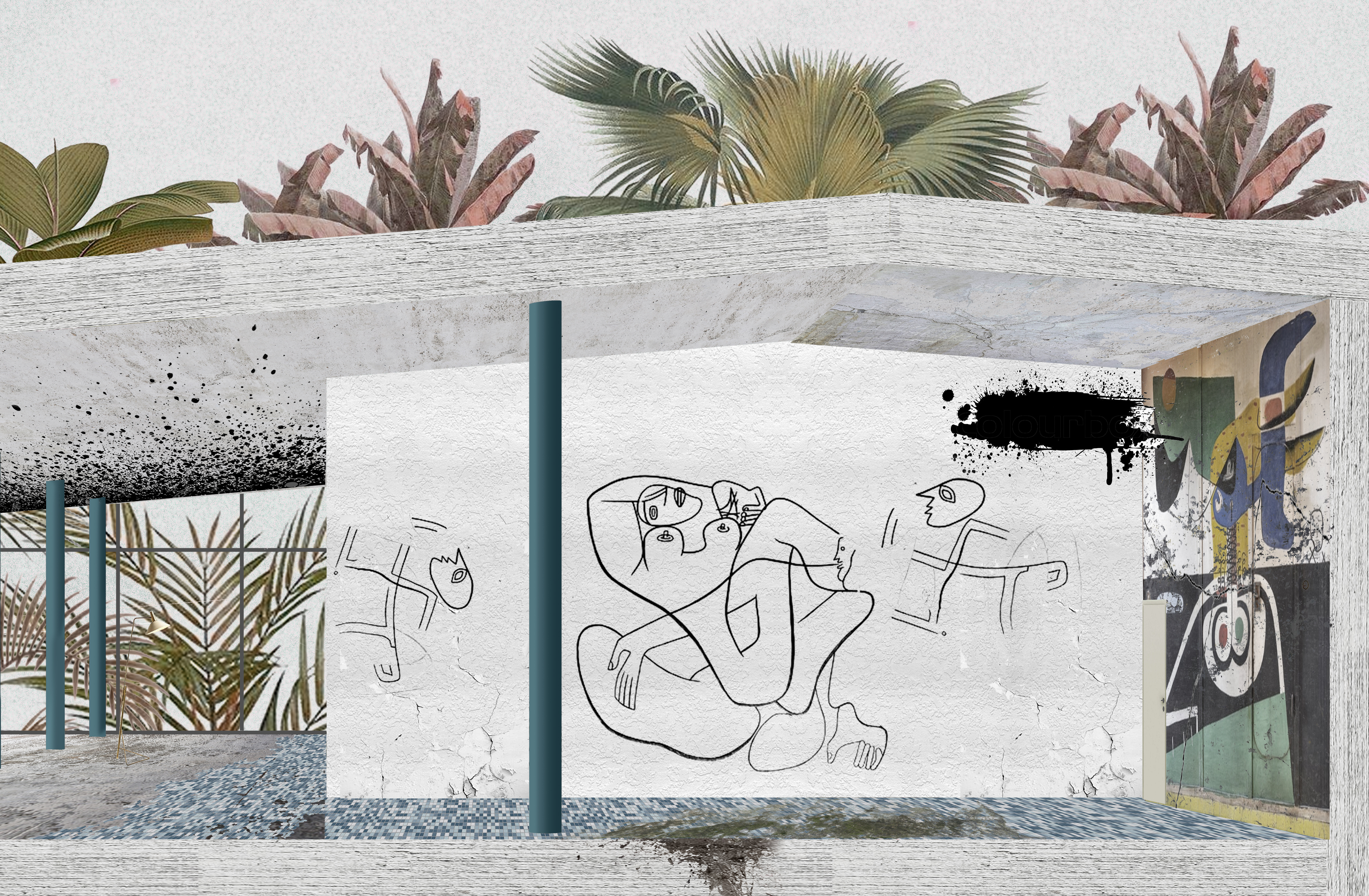The Glass House
Yale School of Architecture
Summer 2018 Visualization IV
Critics John Blood and Amina Blacksher
Partners Manasi Punde and Maya Sorabjee
Published Retrospecta 41
This course introduces the use of digital modeling, stop-motion and movement capture, and manual and hybrid drawing to expand each student’s analytical and expressive repertoire. The group was tasked with analyzing Casa de Vidrio by Lina Bo Bardi through forms of media and representation. Through collage and animation, the project assesses Lina Bo Bardi's role in architectural modernist history.

The initial drawings examine three main areas determined the spatial organization of the house: open living room, served and service spaces. We were paricularly interested in the dichotomy between serviced and served spaces, and hoped to highlight this in our group analytical drawing. We found that the served spaces directed views into the interior courtyard, while the serviced spaces directed views outward into the forest. Aside from this, they were more or less equal in terms of spatial volume, and privileged a removed view of the tropical surroundings.


Keeping in mind the systematic exclusion of women from the history of architecture, the group project produced a charred page from A Concise History of Modern Architecture, depicting an anonymous Casa de Vidro in ruins. Other depictions turned Casa de Vidro into a typical modernist structure in the interational style, and grafitti reminiscient of the vandalism of Eileen Gray’s E-1027 by Le Corbusier.



The group project culiminated in an animated sequence that borrows from the style of Street Fighter, in order to question Lina’s legacy in a male-dominated history of modern architecture. Alluding to the vandalism of Eileen Gray’s E-1027 by Le Corbusier, the animation presents the Casa de Vidro under threat by a slew of male modernists, and finally blown up by the 1964 Brazilian military coup.